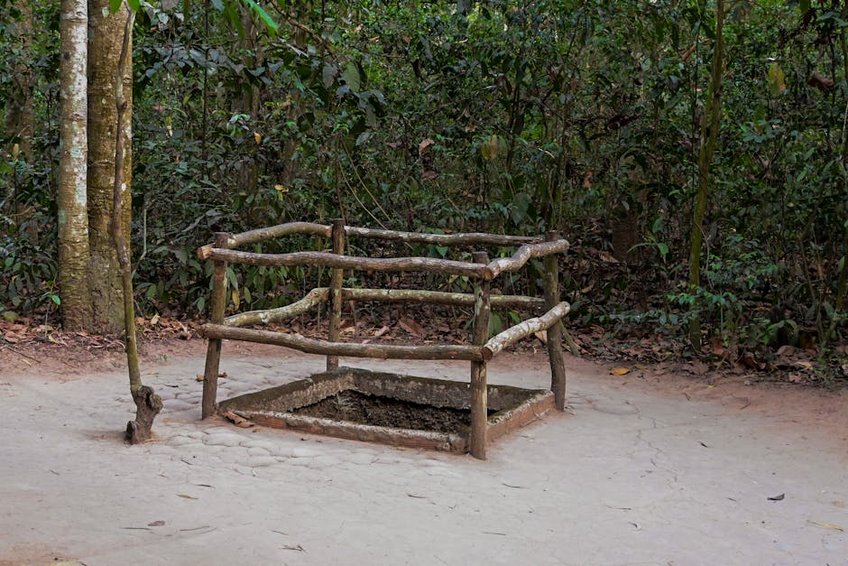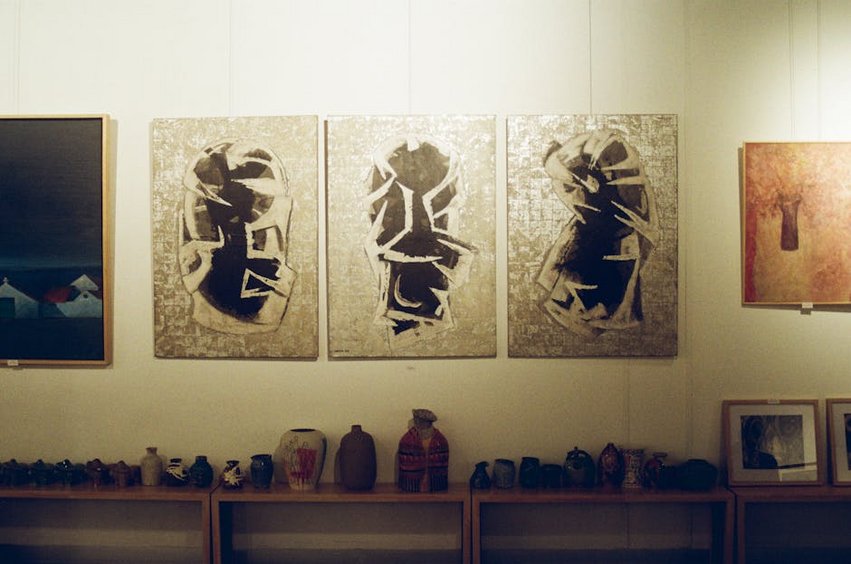Exploring the Ho Chi Minh War Museum: A Powerful Historical Journey
Visiting the Ho Chi Minh War Museum offers one of the most profound and moving historical experiences you can have in Vietnam. Located in the heart of Ho Chi Minh City, this museum provides an intense, educational, and emotionally impactful look at the Vietnam War from the Vietnamese perspective. As you walk through the extensive collections and exhibits, you’ll gain a deeper understanding of the human cost of conflict and the resilience of the Vietnamese people. The Ho Chi Minh War Museum isn’t just a tourist attraction—it’s a place of remembrance, reflection, and learning that stays with you long after your visit. Whether you’re a history enthusiast, a student, or simply a curious traveler, this museum delivers a powerful narrative that challenges perceptions and honors those affected by the war.
Ho Chi Minh War Museum Essential Information – What You Need to Know
Before you plan your visit to the Ho Chi Minh War Museum, it’s important to understand the practical details that will make your experience smooth and meaningful. The museum is housed in a colonial-era building that once served as the US Information Service building, adding another layer of historical significance to your visit. You’ll find exhibits spread across multiple floors and outdoor areas, including military equipment, photographs, and personal artifacts that tell the story of the Vietnam War. The museum focuses particularly on the effects of chemical warfare and the ongoing struggle for peace, making it an educational experience that goes beyond typical war museums. Allow at least 2-3 hours to fully absorb the exhibits and reflect on the powerful stories presented.
Museum Layout and Main Exhibits – Navigating the Space
- The ground floor features introductory exhibits about Vietnam’s resistance against foreign forces, starting with the French colonial period and moving into the American War
- Upper floors contain photographic evidence of war atrocities, with particularly graphic images that may be disturbing to some visitors
- The outdoor area displays US military equipment including tanks, helicopters, and aircraft captured during the conflict
- Basic admission costs approximately $2-3 USD per person, making it very affordable for most travelers
- Audio guides are available for an additional $2-3 USD and provide valuable context for non-Vietnamese speakers
- Consider budgeting $5-10 USD for transportation if you’re not staying within walking distance of the museum
- Official War Remnants Museum Website
- Lonely Planet War Remnants Museum Guide
Historical Context and Significance – Understanding the Narrative
The Ho Chi Minh War Museum presents the Vietnamese perspective on what they call the “American War,” offering a counterpoint to Western narratives you may be familiar with. The exhibits emphasize the human cost of conflict, particularly focusing on civilian suffering and the long-term environmental impact of chemical defoliants like Agent Orange. This approach creates a deeply emotional experience that encourages visitors to consider the broader consequences of war beyond military strategy and politics. The museum doesn’t shy away from difficult subjects, making it an important site for understanding modern Vietnamese history and the country’s journey toward reconciliation and development.

Ho Chi Minh War Museum Planning Your Visit – Timing and Practicalities
Planning your visit to the Ho Chi Minh War Museum requires consideration of several factors including timing, budget, and preparation for the emotionally heavy content. The museum attracts visitors from around the world, so arriving early can help you avoid the largest crowds and have a more contemplative experience. Remember that you’ll be walking through exhibits that depict war violence and suffering, so mental preparation is as important as practical planning. Many visitors find it helpful to schedule some lighter activities after their museum visit to process the heavy historical content. The museum’s location in central Ho Chi Minh City makes it easy to combine with other attractions, but give yourself adequate time to fully engage with the powerful exhibits.
Best Time to Visit the War Museum
The ideal time to visit the Ho Chi Minh War Museum is during the dry season from December to April, when the weather is more comfortable for exploring both indoor and outdoor exhibits. Mornings between 8:30-10:00 AM tend to be less crowded, giving you more space for reflection. Avoid Vietnamese public holidays when local visitors significantly increase museum attendance. The museum maintains a consistent temperature indoors, but the outdoor exhibits can be hot and humid during midday, so morning or late afternoon visits provide more comfortable viewing conditions for the extensive collection of military hardware displayed outside.
Budget Planning and Museum Costs
Essential Preparation Checklist
Preparing for your Ho Chi Minh War Museum visit involves both practical and emotional considerations. Wear comfortable shoes as you’ll be standing and walking for several hours through extensive exhibits. Bring water as the museum can be warm and emotional, though there is a café on site. Most importantly, prepare yourself mentally for graphic content including photographs of war injuries and victims of chemical weapons. Many visitors find it helpful to read about the Vietnam War beforehand to better contextualize the exhibits. The museum provides information in both Vietnamese and English, but the emotional impact transcends language barriers.
Ho Chi Minh War Museum Top Exhibits and Must-See Displays
The Ho Chi Minh War Museum contains several powerful exhibits that you shouldn’t miss during your visit. The outdoor display of military equipment immediately captures your attention with US aircraft, tanks, and artillery pieces that were captured or destroyed during the conflict. Inside, the “Requiem” exhibit featuring photographs by Tim Page and other war photographers provides a humanizing look at the war’s impact on soldiers and civilians alike. The Agent Orange exhibit is particularly moving, documenting the long-term effects of chemical warfare on multiple generations of Vietnamese families. Each section of the museum builds upon the last, creating a comprehensive narrative that helps visitors understand the scale and impact of the Vietnam War from a perspective often overlooked in Western historical accounts.
Must-See Highlights and Key Exhibits
Among the many powerful displays at the Ho Chi Minh War Museum, several stand out as particularly impactful. The guillotine used by the French colonial government offers a stark reminder of Vietnam’s long struggle for independence. The photographic evidence of the My Lai Massacre provides a difficult but important look at one of the war’s most infamous incidents. The collection of deformed fetuses preserved in jars demonstrates the horrific legacy of Agent Orange with heartbreaking clarity. These exhibits, while challenging to view, form the core of the museum’s mission to document the human cost of war and promote peace through remembrance and education.
Lesser-Known Exhibits and Hidden Details
Beyond the main attractions, the Ho Chi Minh War Museum contains several lesser-known exhibits that reward closer attention. The collection of propaganda posters from both North and South Vietnam provides insight into the psychological dimensions of the conflict. Look for the exhibit on international anti-war movements, which highlights global opposition to the conflict. The documentation of wartime journalism shows how reporters covered the conflict, often at great personal risk. These smaller exhibits add depth to the museum’s narrative and help visitors understand the broader context of the Vietnam War beyond battlefield accounts.
Ho Chi Minh War Museum Practical Travel Information
Navigating your visit to the Ho Chi Minh War Museum requires some practical knowledge about transportation, nearby amenities, and accessibility. The museum is located at 28 Võ Văn Tần, Phường 6, District 3, making it easily accessible from most parts of Ho Chi Minh City. The area surrounding the museum offers numerous dining options ranging from street food stalls to air-conditioned restaurants where you can decompress after your visit. The museum itself has basic facilities including restrooms and a small café, but you’ll find more comprehensive services in the surrounding neighborhood. Understanding these practical aspects will help you focus on the museum’s powerful content rather than logistical concerns.
| Category | Options/Features | Price Range (USD) |
|---|---|---|
| Transportation | Taxi, ride-sharing, public bus | $2-10 |
| Nearby Dining | Local restaurants, international cuisine, street food | $3-15 |
| Souvenirs | Books, postcards, museum publications | $5-20 |
| Guided Tours | Audio guide, occasional guided tours | $2-5 |


